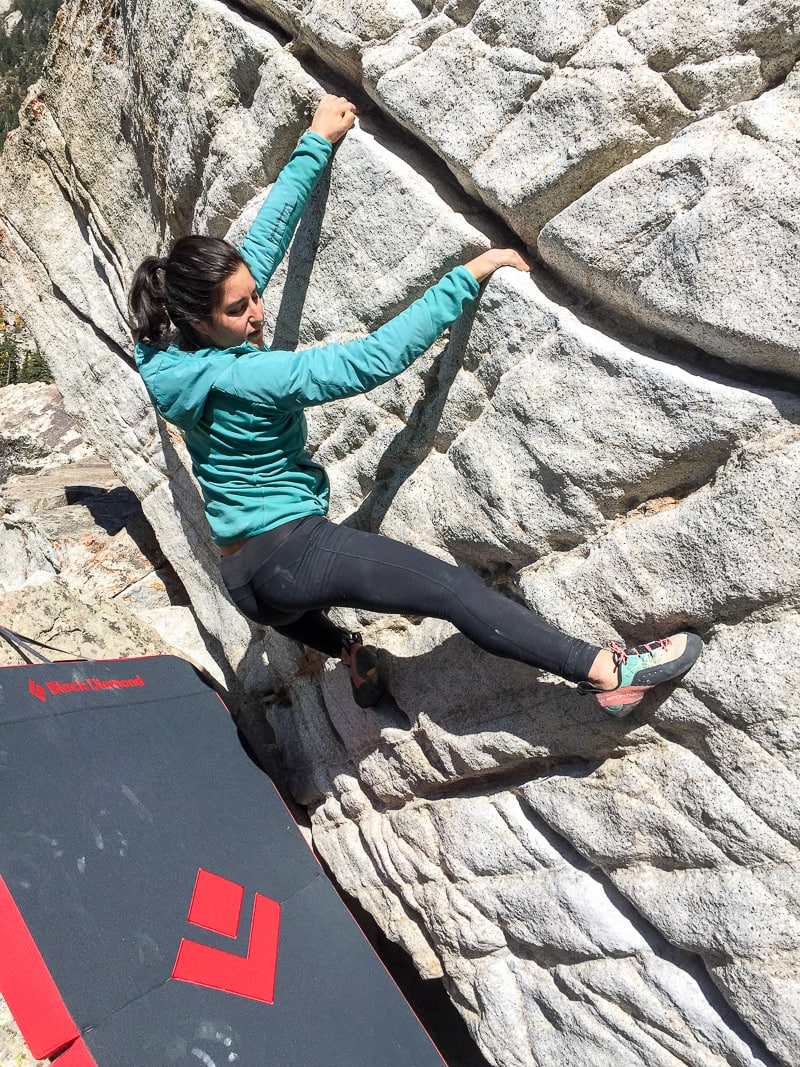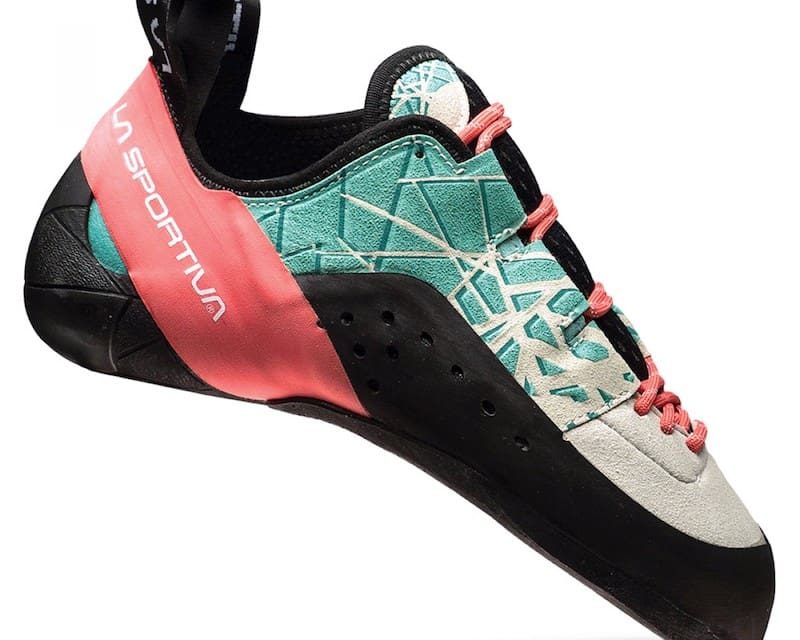This year, I wore my La Sportiva Otakis straight down to the very bones of my feet. I swore, I’d never need another shoe for anything other than the steepest of caves.
Months passed and Sportiva launched a lace-up sibling, the Kataki, which is built on the same last and midsole as the Otaki. I knew I needed to give them a whirl.
I believed I was going to like the Katakis before I even laced them up. But what shocked me most was that, after a few months of wear, the Katakis, with their slightly more aggressive shape and lower-volume toe box, edged out the Otakis as my top pick for favorite all-around women’s climbing shoe.
Fit
The Katakis are moderately downturned, with 4mm of the familiar Vibram XS Grip2 rubber. The sizing was the same for me as the women’s version of the Sportiva Solution, Velcro Muira, and Otaki, which is nice if you’re a La Sportiva regular. I like to size my shoes with a toe-knuckle-be-damned fit, no matter what the so-called experts running this blog say.
The Katakis are an inspired evolution (not a replacement) of the Katana Lace, and employ a similar sock-like tongue to eliminate dead space. The Katakis are lower volume and more asymmetrical than the Katana Lace. If you’re a raving Katana fan, you may find the Katakis to be too narrow to use. But if the shoe fits …

Performance
When I put the Katakis on, I stretch the tongue toward me and smooth it out before lacing-up to lock in the fit. Once on, they feel completely secure while climbing. Even after a long hot summer day, my foot doesn’t slop or slide around, and there are no gaps.
From the gently overhanging limestone pockets of The Fins in Idaho to the steep cobbles of Maple Canyon, Utah, I’ve worn the Katakis on a wide range of rock. They performed well in most situations but really shined when it was time to tech-out on small edges or pockets. The toe felt precise and supportive, but the midsole was soft enough to offer sensitivity and flexibility on steeper routes.
According to the company, Sportiva’s heel-design technology, something call S-Heel, boasts “the perfect heel cup fit by eliminating heel deformation in high-torsion situations.” I’m not really sure what a high-torsion situation looks like, but I can attest to the fact that the shoe has a suction-cup fit on my heel and provided no trouble on all kinds of heel-hooking situations, maybe even high-torsion ones, too.
the Katakis are more downturned, which gave me more power under my big toe on overhanging climbs
Lace-up versus velcro
The choice between Kataki or Otaki comes down to the age-old battle of lace-up versus velcro. Mostly, it’s a personal preference, and how you intend to use the shoes.
I found that the Kataki maintained their shape after they were broken-in, while the wider, less adjustable toe box of the Otakis began to stretch too much after months of use, and without laces, I was unable to compensate for that stretch. Bottom line, the Otakis began to feel slightly sloppy after months of climbing, while the Katakis carry their age with more grace.
Also, the Katakis incorporate a 3/4 sole for easy re-soling, which makes them a good investment.
Beyond the laces vs velcro debate, the Katakis are more downturned, which gave me more power under my big toe on overhanging climbs.
Bottom Line
For pure performance, the Katakis took a slight lead over the Otaki. But if you’re looking for wide-foot comfort, and on-and-off ease, the Otakis are a great choice. It’s hard to go wrong with either of these versatile performers, but I’ll be sticking with the Katakis from now on.




Recent Comments